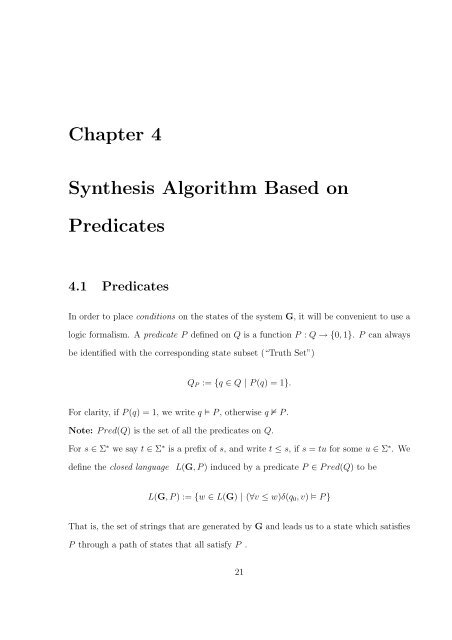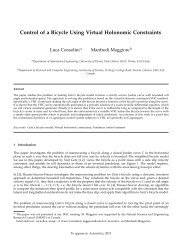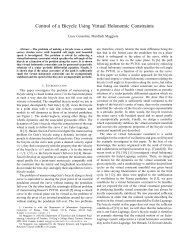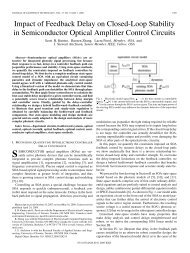State Based Control of Timed Discrete Event Systems using Binary ...
State Based Control of Timed Discrete Event Systems using Binary ...
State Based Control of Timed Discrete Event Systems using Binary ...
You also want an ePaper? Increase the reach of your titles
YUMPU automatically turns print PDFs into web optimized ePapers that Google loves.
Chapter 4Synthesis Algorithm <strong>Based</strong> onPredicates4.1 PredicatesIn order to place conditions on the states <strong>of</strong> the system G, it will be convenient to use alogic formalism. A predicate P defined on Q is a function P : Q → {0, 1}. P can alwaysbe identified with the corresponding state subset (“Truth Set”)Q P := {q ∈ Q | P (q) = 1}.For clarity, if P (q) = 1, we write q P , otherwise q P .Note: P red(Q) is the set <strong>of</strong> all the predicates on Q.For s ∈ Σ ∗ we say t ∈ Σ ∗ is a prefix <strong>of</strong> s, and write t ≤ s, if s = tu for some u ∈ Σ ∗ . Wedefine the closed languageL(G, P ) induced by a predicate P ∈ P red(Q) to beL(G, P ) := {w ∈ L(G) | (∀v ≤ w)δ(q 0 , v) P }That is, the set <strong>of</strong> strings that are generated by G and leads us to a state which satisfiesP through a path <strong>of</strong> states that all satisfy P .21







